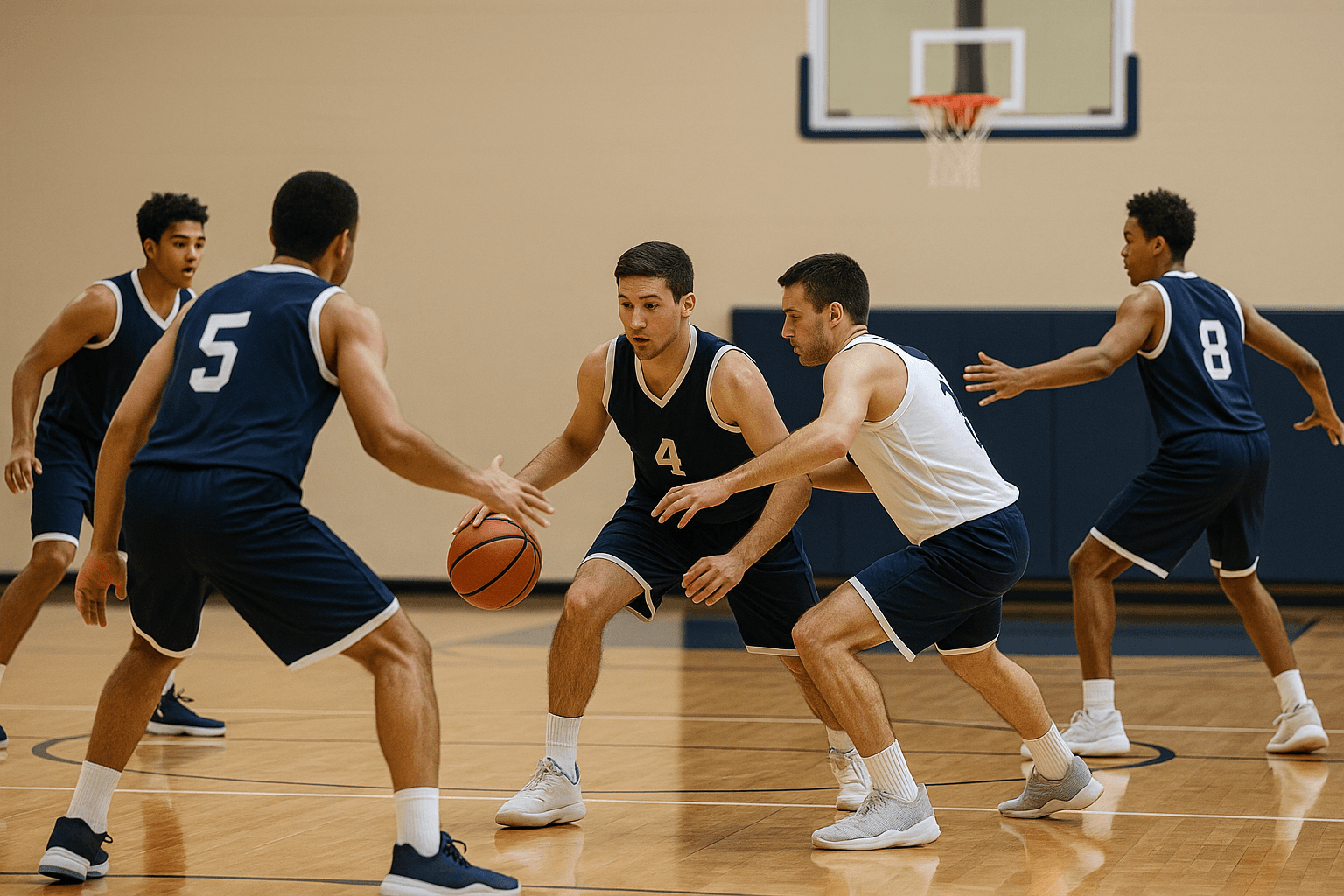
Offensive Strategies
A basketball team runs an offensive play with passing, cutting, and movement to create scoring opportunities.
Offensive Strategies in Basketball: Plays to Dominate the Game
Offense in basketball is more than just shooting—it’s about creating opportunities, reading the defense, and making smart decisions. Having a solid offensive strategy helps your team stay unpredictable and consistently find ways to score.
This guide explains the most common offensive strategies, how they work, and why they’re important for winning games.
Why Offensive Strategy Is Crucial
Without a plan, teams often stall on offense—passing the ball around without purpose or forcing bad shots. With an organized strategy, players know where to move, when to cut, and how to create scoring chances.
Benefits of Offensive Strategy
- Creates open shots and layups
- Forces defenses to adjust and make mistakes
- Builds teamwork and ball movement
- Helps players stay calm under pressure
Problems Without a Strategy
- Predictable offense that’s easy to defend
- Players standing still instead of moving
- Forced or rushed shots
- Frustration and turnovers
Common Offensive Strategies
Motion Offense
A flexible offense built on movement, passing, and spacing. Instead of set plays, players read the defense and react.
- How It Works: Players cut, screen, and pass constantly to create open looks.
- Benefits: Encourages teamwork, keeps defenders guessing.
- Example Play: A guard cuts to the basket after setting a screen, freeing a teammate for a pass.
Pick-and-Roll
One of the most common plays in basketball, involving two players working together.
- How It Works: A screener sets a pick for the ball handler, who drives or passes depending on the defense.
- Benefits: Creates mismatches and open shots.
- Example Play: The screener rolls to the basket for a layup or pops out for a jumper.
Flex Offense
A structured offense built on screens and cuts.
- How It Works: Players cut across the baseline (flex cut) while others set screens to open up scoring chances.
- Benefits: Works well against man-to-man defense and keeps the ball moving.
- Example Play: A forward sets a baseline screen for a guard, who cuts for an open layup.
Triangle Offense
Made famous by Phil Jackson’s Bulls and Lakers teams.
- How It Works: Three players form a triangle on one side, creating spacing and options to pass, cut, or post up.
- Benefits: Great spacing, allows stars to isolate, while keeping team movement.
- Example Play: The wing passes to the post, then cuts or screens, opening up multiple scoring options.
Fast Break
An up-tempo offense designed to score before the defense can get set.
- How It Works: After a rebound or turnover, players sprint downcourt for layups or open jumpers.
- Benefits: Creates high-percentage shots and puts pressure on defenses.
- Example Play: Point guard pushes the ball, wings sprint wide, big man runs the middle for a quick bucket.
High-Low Offense
Focused on inside scoring through two post players.
- How It Works: One big plays at the free throw line (high post), the other near the rim (low post). They work together to score or pass to shooters.
- Benefits: Takes advantage of strong post players and collapses defenses.
- Example Play: High post feeds the low post for an easy basket; if defense collapses, kick out to an open shooter.
Adjusting to the Defense
Good offense isn’t just running plays—it’s about adapting to what the defense gives you.
- Against man-to-man defense: Use screens, cuts, and motion to create separation.
- Against zone defense: Move the ball quickly and get it inside to collapse the defense.
- Against full-court press: Use spacing, passing, and calm decision-making to break pressure.
Common Mistakes to Avoid
- Standing still instead of moving off the ball
- Over-dribbling instead of passing
- Rushing shots without running the offense
- Not recognizing defensive adjustments
Final Takeaway
Offensive strategies are the backbone of winning basketball. By learning plays like the motion offense, pick-and-roll, triangle, and fast break, teams can stay unpredictable and find scoring opportunities. The best offenses keep defenders guessing, create open shots, and make every player on the court a threat.